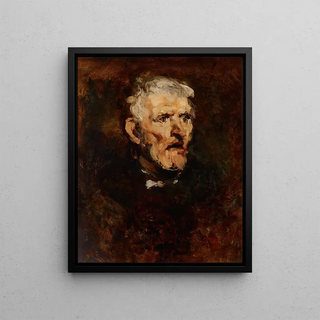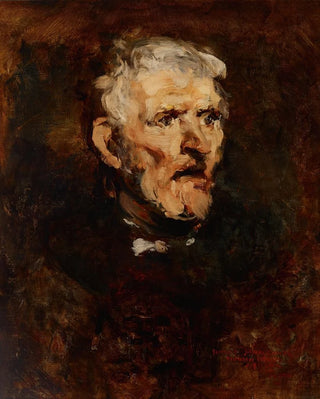Art print | Study of an Old Man - Joseph Frank Currier


View from behind

Frame (optional)
In the vast panorama of art history, certain works stand out for their ability to capture the very essence of humanity. "Study of an Old Man - Joseph Frank Currier" is a striking example. This piece, imbued with depth and sensitivity, invites us to delve into the intimacy of a face marked by time. Confronted with this representation, the viewer feels an immediate connection with the subject, a man whose features tell stories of life, experiences, and wisdom. The way Currier manages to translate the soul of an individual through the brushstroke is simply fascinating, prompting reflection on the passage of time and the beauty of aging faces.
Style and uniqueness of the work
Currier's style is characterized by meticulous detail and striking realism. In "Study of an Old Man," every wrinkle, every shadow on the character's face is rendered with such precision that it seems to vibrate with emotion. The nuances of light and shadow play a crucial role in the composition, creating an atmosphere that is both melancholic and serene. The artist does not merely seek to reproduce a face but to grasp its essence, to extract its psychological depth. This stylistic choice, far from being trivial, reflects a desire to transcend simple representation and offer a reflection on the human condition. Thus, this work becomes a mirror, not only for the old man but also for all who observe it, inviting them to contemplate their own passage through time.
The artist and his influence
Joseph Frank Currier, though less well-known than some of his contemporaries, has left an indelible mark on the art world. His ability to capture life in his works, through portraits of rare intensity, testifies to exceptional talent. Currier was influenced by the great masters of the past, but he developed a style that is uniquely his own, blending tradition and modernity. His approach to portrait painting goes beyond simple representation; he seeks to establish a dialogue between art and the viewer. Through his works, he questions perception

Matte finish

View from behind

Frame (optional)
In the vast panorama of art history, certain works stand out for their ability to capture the very essence of humanity. "Study of an Old Man - Joseph Frank Currier" is a striking example. This piece, imbued with depth and sensitivity, invites us to delve into the intimacy of a face marked by time. Confronted with this representation, the viewer feels an immediate connection with the subject, a man whose features tell stories of life, experiences, and wisdom. The way Currier manages to translate the soul of an individual through the brushstroke is simply fascinating, prompting reflection on the passage of time and the beauty of aging faces.
Style and uniqueness of the work
Currier's style is characterized by meticulous detail and striking realism. In "Study of an Old Man," every wrinkle, every shadow on the character's face is rendered with such precision that it seems to vibrate with emotion. The nuances of light and shadow play a crucial role in the composition, creating an atmosphere that is both melancholic and serene. The artist does not merely seek to reproduce a face but to grasp its essence, to extract its psychological depth. This stylistic choice, far from being trivial, reflects a desire to transcend simple representation and offer a reflection on the human condition. Thus, this work becomes a mirror, not only for the old man but also for all who observe it, inviting them to contemplate their own passage through time.
The artist and his influence
Joseph Frank Currier, though less well-known than some of his contemporaries, has left an indelible mark on the art world. His ability to capture life in his works, through portraits of rare intensity, testifies to exceptional talent. Currier was influenced by the great masters of the past, but he developed a style that is uniquely his own, blending tradition and modernity. His approach to portrait painting goes beyond simple representation; he seeks to establish a dialogue between art and the viewer. Through his works, he questions perception






